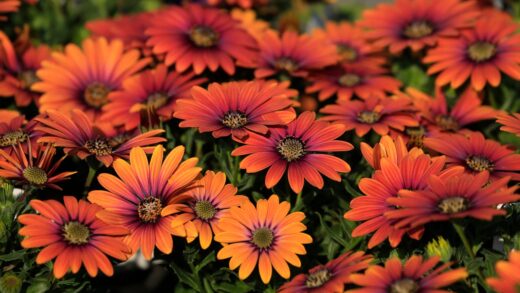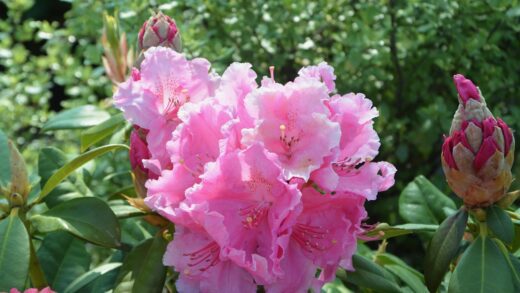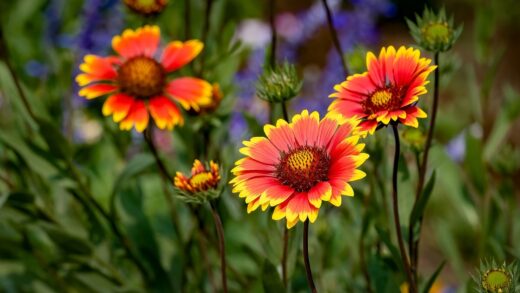Water is the lifeblood of any plant, and for the bellflower, providing the right amount at the right time is fundamental to achieving lush foliage and a profusion of its signature blooms. While the genus is diverse, with species adapted to a range of habitats from alpine screes to moist woodlands, a common thread is their intolerance for waterlogged soil. The key to successful irrigation lies in balance—maintaining consistent soil moisture to support active growth without creating the anaerobic conditions that lead to root rot. Understanding the specific needs of a chosen variety, combined with careful observation of the plant and its environment, is the most effective way to master the art of watering bellflowers. This chapter will delve into the critical aspects of their water needs, from establishment to seasonal adjustments.
Upon first planting a bellflower, whether it is a small seedling or a more mature container-grown specimen, providing adequate water is of the utmost importance. The initial watering should be deep and thorough, serving to settle the soil firmly around the roots and eliminate any air pockets. In the crucial first few weeks following planting, the soil should be kept consistently moist to help the plant overcome transplant shock and encourage the development of a new, expansive root system. This period of establishment is not the time for a “tough love” approach; regular checks of the soil moisture, perhaps every other day, are necessary to ensure the young plant has the hydration it needs to begin its life in the new location successfully.
The frequency and volume of water required by an established bellflower are dictated by a confluence of factors, including the specific species, the prevailing weather conditions, the soil type, and the plant’s location in the garden. For instance, bellflowers planted in sandy, quick-draining soil will require more frequent watering than those in heavier clay soils that retain moisture for longer. Similarly, plants situated in full, hot sun will lose more water through transpiration and will need more irrigation than those grown in cooler, partial shade. The best indicator of when to water is the soil itself; a simple test of inserting a finger one to two inches deep will reveal if the soil is beginning to dry out and irrigation is needed.
The method of water application can also have a significant impact on the health of the plant. It is always preferable to water bellflowers deeply and less frequently rather than shallowly and often. Deep watering encourages the roots to grow further down into the soil, creating a more drought-tolerant and resilient plant. Shallow watering, in contrast, promotes a shallow root system that is more vulnerable to drying out during periods of heat and drought. Furthermore, applying water directly to the base of the plant, using a soaker hose or a watering can, is superior to overhead watering. This technique delivers water directly to the root zone where it is needed and helps to keep the foliage dry, which is a key preventative measure against fungal diseases like powdery mildew and rust.
Recognizing the signs of both under-watering and over-watering is a crucial skill for any gardener. An under-watered bellflower will often exhibit wilting leaves, particularly during the heat of the day, and its flowers may fade or drop prematurely. The soil around the plant will be visibly dry and may even pull away from the base of the plant. Conversely, an over-watered plant may also wilt, but its leaves will often turn yellow or brown and feel limp or mushy. The soil will be consistently soggy, and in advanced cases of root rot, the base of the plant may become dark and soft. Careful observation and adjusting watering practices accordingly are essential for maintaining the plant’s health.
More articles on this topic
Watering during different life stages
The water needs of a bellflower are not static; they change significantly as the plant progresses through its life cycle from a delicate seedling to a fully established, mature clump. During the germination and seedling stage, consistent moisture is absolutely critical. The fine, hair-like roots of a seedling are extremely vulnerable to drying out, and even a brief period of drought can be fatal. The growing medium should be kept evenly moist, akin to a well-wrung-out sponge, but never saturated, as this can lead to a fungal issue known as damping-off, which causes the seedlings to rot at the soil line. Using a fine mist sprayer is the ideal way to water at this stage, as it provides gentle hydration without dislodging the tiny plants.
As the young plant is transplanted into the garden and enters its establishment phase, watering remains a top priority. For the first full growing season, the bellflower is still developing its root system, making it less resilient to drought than a mature plant. The goal during this period is to provide regular, deep watering that encourages the roots to penetrate further into the soil profile. A general guideline is to provide about one inch of water per week, either from rainfall or supplemental irrigation. However, this is just a guideline, and it is crucial to monitor the soil moisture directly and adjust based on weather conditions, as a hot, windy week will necessitate more frequent watering than a cool, overcast one.
Once a bellflower is fully established, typically after its first year in the ground, it becomes more self-sufficient and its watering needs generally decrease. The now-extensive root system is more efficient at seeking out moisture from a larger volume of soil, making the plant more resilient during short dry spells. During periods of normal rainfall, established bellflowers may not require any supplemental watering at all. However, during extended periods of drought or extreme heat, even mature plants will benefit from a deep soaking every week or two to keep them from becoming stressed, which can impact their flowering performance and overall health.
The water requirements also shift during the plant’s dormancy period. As autumn approaches and the plant begins to wind down its active growth in preparation for winter, its water uptake slows considerably. It is important to gradually reduce the frequency of supplemental watering at this time. The soil should not be allowed to become bone dry, but it is equally important that it is not overly wet heading into winter, as soggy, cold soil is the primary cause of crown and root rot during the dormant season. For most hardy perennial bellflowers, the natural autumn and winter precipitation is sufficient to meet their minimal moisture needs until growth resumes in the spring.
More articles on this topic
The influence of soil and mulch
The type of soil in which a bellflower is planted has a profound impact on its water requirements and dictates the necessary frequency of irrigation. Soil is fundamentally a mixture of sand, silt, and clay particles, and the relative proportions of these components determine its texture and, consequently, its water-holding capacity. A sandy soil, with its large particle sizes, has excellent drainage but a very low water-holding capacity. Water passes through it quickly, meaning that bellflowers planted in sandy conditions will need to be watered much more frequently to prevent them from drying out, especially during warm weather.
Conversely, a soil that is heavy in clay is composed of very fine particles, resulting in smaller pore spaces. This allows the soil to hold a significant amount of water for a longer period, reducing the need for frequent irrigation. However, the downside of heavy clay is its potential for poor drainage and compaction, which can lead to waterlogged conditions that are detrimental to bellflowers. The ideal soil for most species is a loam, which offers a balanced combination of sand, silt, and clay, providing both good drainage and adequate moisture retention. Understanding your garden’s specific soil type is therefore essential for developing an appropriate and effective watering schedule.
Regardless of the native soil type, its quality can be significantly improved through the incorporation of organic matter. Adding materials like compost, aged manure, or leaf mold works wonders in any soil. In sandy soils, organic matter acts like a sponge, absorbing and holding onto water and making it available to the plant roots for longer. In heavy clay soils, it helps to bind the fine clay particles into larger aggregates, a process called flocculation, which creates larger pore spaces, thereby improving drainage and aeration. This simple act of amending the soil before planting can create a much more forgiving environment, buffering against both drought and excessive moisture.
The application of an organic mulch layer over the soil surface is another highly effective tool for managing soil moisture and reducing watering needs. A two-to-three-inch layer of mulch, such as shredded bark, wood chips, or straw, acts as a physical barrier that slows the rate of evaporation from the soil surface, keeping the soil cooler and moister for longer. This is particularly beneficial during hot, sunny weather. As an added benefit, as the organic mulch gradually decomposes, it continues to add valuable organic matter to the soil, further improving its structure and water-holding capacity over time. Mulching is a simple, sustainable practice that significantly contributes to efficient water use in the garden.
Watering in different climates
The geographical location and its associated climate play a defining role in shaping the irrigation strategy for bellflowers. In temperate climates with regular, year-round rainfall, such as in much of the United Kingdom or the Pacific Northwest of the United States, established bellflowers may require very little supplemental watering. The natural precipitation is often sufficient to meet their needs for most of the growing season. In these regions, the primary concern is often ensuring adequate drainage to cope with periods of excessive rain, rather than providing extra water. Supplemental irrigation is typically only necessary during unusual or prolonged summer dry spells.
In contrast, gardens located in Mediterranean climates, characterized by hot, dry summers and mild, wet winters, present a different set of challenges. During the long, rainless summer months, regular and deep supplemental watering is absolutely essential for the survival and performance of most bellflower species. Gardeners in these regions should plan to provide a thorough soaking at least once a week, or more frequently for plants in containers or very sandy soil. It is also beneficial to plant bellflowers in locations that receive some afternoon shade to reduce heat stress and water loss through transpiration. The use of soaker hoses or drip irrigation systems can be particularly effective in these climates, as they deliver water efficiently to the root zone with minimal loss to evaporation.
For gardeners in continental climates, which experience hot summers but also cold, often snowy, winters, the focus of watering shifts dramatically with the seasons. Summer watering will be similar to that in other hot regions, with a focus on providing consistent moisture during dry periods. However, the preparation for winter is also critical. It is important to ensure the plants are well-hydrated going into the autumn, but to cease supplemental watering as the ground begins to freeze. The snow cover that is typical of these climates provides excellent insulation for the dormant plant crowns, protecting them from both cold injury and dehydration from dry winter winds.
In arid or desert climates, growing most bellflower species presents a significant challenge and requires intensive water management. Success is often only possible by creating a microclimate with amended, moisture-retentive soil and by providing regular, reliable irrigation. Choosing more drought-tolerant species, such as some of the Mediterranean natives, can improve the chances of success. In these demanding environments, the use of highly efficient irrigation methods like drip systems is not just a recommendation but a necessity. Furthermore, a thick layer of mulch is crucial to conserve every possible drop of moisture in the soil. Without these intensive measures, the low humidity and high temperatures of arid regions are generally inhospitable for these plants.
Special considerations for container-grown plants
Growing bellflowers in containers, pots, or hanging baskets offers wonderful versatility, but it also fundamentally changes their watering requirements compared to their counterparts in the garden bed. The limited volume of soil in a container can dry out much more rapidly than garden soil, especially on hot, windy, or sunny days. This is due to exposure on all sides, which increases the rate of evaporation. Consequently, container-grown bellflowers require much more frequent monitoring and watering. During the peak of summer, it may even be necessary to water them once or even twice a day to prevent the soil from drying out completely.
The type of container used also has a significant influence on watering frequency. Porous pots, such as those made from terracotta or unglazed clay, allow moisture to evaporate through their sides, which means the soil will dry out faster than in non-porous containers like plastic or glazed ceramic. While this can be an advantage in preventing waterlogging, it does mean that plants in terracotta pots will need more vigilant watering. When choosing a container, it is also absolutely essential to ensure it has adequate drainage holes at the bottom. Without proper drainage, any excess water will accumulate in the bottom of the pot, leading to saturated soil and the almost certain demise of the plant due to root rot.
The potting medium used for container-grown bellflowers should be carefully chosen to provide a balance between moisture retention and good drainage. A high-quality, all-purpose potting mix is usually a good starting point, but it can often be improved by amending it with materials like perlite or coarse sand to enhance its drainage capacity. Conversely, if the mix seems to dry out too quickly, incorporating a small amount of compost or a water-retaining polymer can help it hold moisture for longer periods. The goal is to create a growing medium that stays moist but is never soggy, providing a healthy environment for the plant’s roots.
When it comes to the act of watering container plants, the best practice is to water thoroughly until water begins to run out of the drainage holes at the bottom of the pot. This ensures that the entire root ball has been moistened, not just the top layer of soil. After this thorough watering, allow the top inch or two of the potting mix to dry out before watering again. This cycle of deep watering followed by a slight drying period is ideal for most bellflowers in containers. It is also important to avoid letting the pot sit in a saucer full of water for an extended period, as this can lead to the same problems as having no drainage at all.















